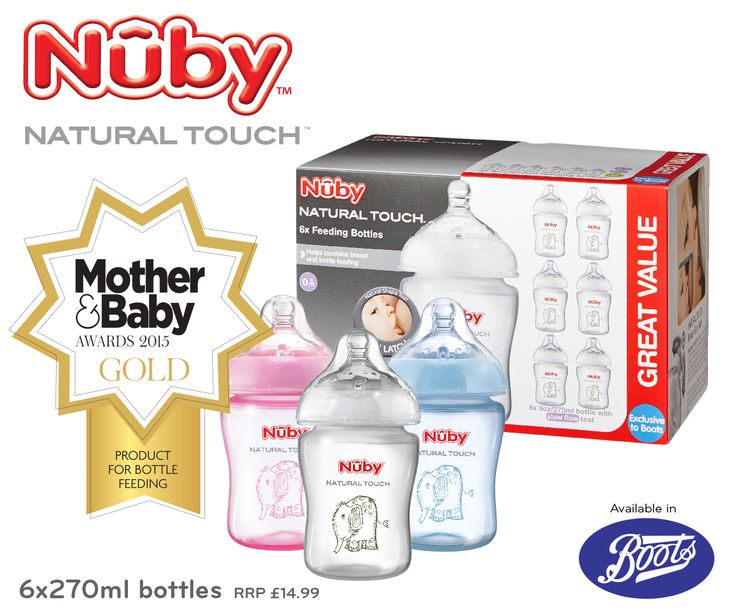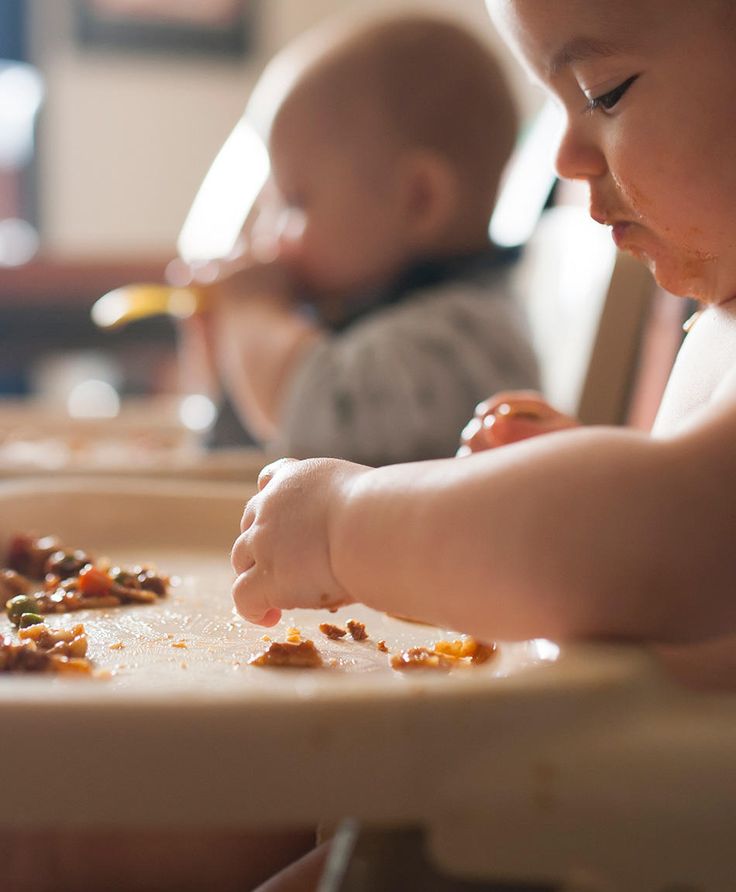Nuby baby food feeder
Nuby Twist N Feed Infant First Foods Feeder with Hygienic Cover (10 Months+)
6
20
6
20
6
20
6
20
6
20
6
20
6
20
6
20
6
20
- Product
- Description
- Reviews (0)
- What's in the box
Description
Highlight
- Safely introduce new foods & textures: perfect for introducing new foods and textures without the risk of choking.
Safety lock: the safety lock prevents child from opening Feeder.
- To use: Open the safety lock, fill silicone nipple with fruits, veggies and close safety lock. Twist handle: twist handle to push soft food upward.
- Silicone nipple: the silicone nipple provides a hygienic delivery system while allowing your child to taste and see that fruits and veggies are good.
- Suitable for teething: fill silicone nipple with frozen fruits, veggies or ice and it helps soothe tender gums during teething.
- Bpa Free;
- 10+ months
Safely introduce first solids to your baby with Nuby's twist n' Feed infant Feeder. The handle twists to push food up! The nipple is made of silicone and comes with a hygienic cover. Best for 10+ months old. Bpa free.
- Safely introduce new foods & textures: perfect for introducing new foods and textures without the risk of choking. Safety lock: the safety lock prevents child from opening Feeder.

- To use: Open the safety lock, fill silicone nipple with fruits, veggies and close safety lock. Twist handle: twist handle to push soft food upward.
- Silicone nipple: the silicone nipple provides a hygienic delivery system while allowing your child to taste and see that fruits and veggies are good.
- Suitable for teething: fill silicone nipple with frozen fruits, veggies or ice and it helps soothe tender gums during teething.
- Bpa Free;
- 10+ months
Reviews (0)
view all
back
0 reviews
What's in the box
1 x Nuby Twist N Feed Infant First Foods Feeder with Hygienic Cover (10 Months+)
BestsellersMore
LatestMore
Favourite Brands
Ultimate Guide to Baby Feeders: Mesh and Silicone
You may have seen baby feeders, whether mesh or silicone, and wondered what they are for. They are a great tool for feeding babies and toddlers—and are especially awesome for teething relief. There are many on the market though, so today I’m sharing the best of the best.
There are many on the market though, so today I’m sharing the best of the best.
Baby Feeder
A baby feeder is made up of an easy-hold handle and a little pouch with lots of holes. The idea is that the holes allow some of the flavor and texture of the food to come out, without the concerns that may come with larger pieces of food.
This means you can worry less when it comes to choking risks.
One thing to keep in mind: They don’t allow babies to have the full texture experience of the food—since the texture is mostly the mesh of the feeder. That means you don’t want to use one of these for every meal (or even most meals).
Lots of exposures to lots of textures helps babies and toddlers gain confidence in handling all sorts of foods, which can make feeding kids a lot easier over the long run.
But an infant feeder can be a handy tool to have in the mix, especially if on the go, starting to transition to baby food, or trying out a new food that has you a little nervous.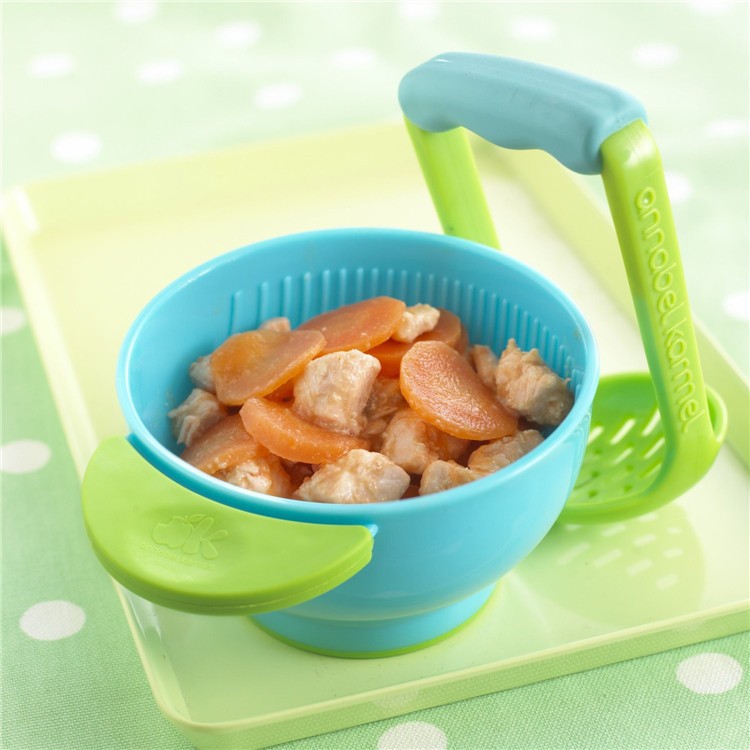
And they are a great way to offer cold teething relief to soothe baby’s gums.
Baby Fruit Feeder
Many people like to use baby feeders to offer fruit, either fresh or frozen, since the product is a safe way for baby to suck on and explore the flavor of a wide range of fruit.
TIP: Another name for this is Baby Fruit Pacifier.
Best Baby Food Feeders
Below are my top picks for infant feeders chosen for ease of use, durability, and ease of care (as in washing!). There are different materials listed, as well as specific information on each product.
Best Mesh Feeder
Munchkin Baby Feeder, sold in a set of two. (Or choose the ones that come with travel caps.)
This baby feeder has a streamlined, simple design of a mesh bag for the food and a ring for baby to hold onto. Small, digestible pieces of food come through so baby is getting some nourishment (and comfort if using for teething) without the risk of choking.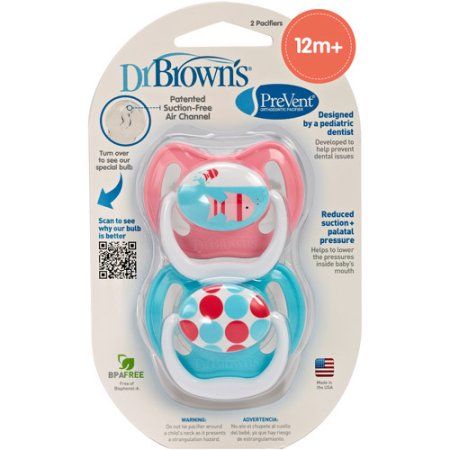 It’s about $7 for two of them.
It’s about $7 for two of them.
Best Silicone Feeder
Boon Silicone Feeder
This baby feeder, which is priced at under $6, is made from durable silicone and can be used with fresh or frozen foods. The interior stem forces food toward the tiny holes in the feeder and the small handle is sized just right for baby’s little hands.
Kidsme Baby FeederBaby Feeder Pacifier Combo
Kidsme Food Feeder
This popular Kidsme feeder has a replaceable silicone pouch that comes in two sizes, so you can adjust and replace as your child grows. It has a unique handle style that some babies may prefer and can be used as a pacifier too. It’s usually priced around $15 and is recommended for ages 4-24 months.
What baby foods should I put into a baby feeder?
Here are some fruits that are good to serve in a baby feeder:
- Raspberries, fresh or frozen
- Strawberries, fresh or frozen
- Blackberries, fresh or frozen
- Cantaloupe
- Honeydew
- Banana
- Mango, fresh or frozen
- Roasted sweet potato
- Roasted butternut squash
- Ripe fresh pear
- Fresh cucumber, skin removed
- Watermelon
- Cooked red meat such as steak
- Frozen grapes (These are NOT safe served to a child this age in any other way as they are a choking risk.
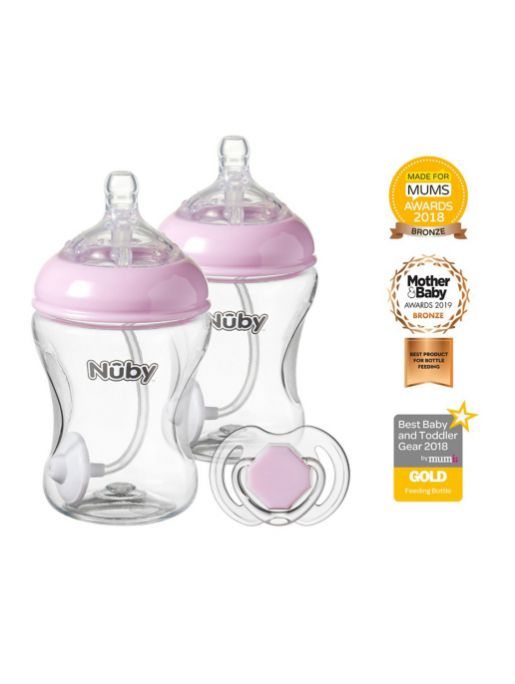 They are fine served inside the feeder, though.)
They are fine served inside the feeder, though.)
TIP: You can use frozen fruit or ripe fresh fruit that’s soft and easy to gum. Avoid any fruits or veggies that are very hard as baby may be frustrated by that texture.
Frequently Asked Questions
What age can baby use a mesh feeder?
Babies can use an infant feeder soon after starting solids around 6 months, or when they can easily hold it and bring it to their mouth.
How do I use a baby feeder to help with teething?
If you fill the feeder, whether mesh or silicone, with frozen fruit, you can soothe teething in infants who are eating solids or in toddlers. It’s cold and yummy, yet requires no real work for the child to suck on, so it’s comforting.
Are all of these baby feeders BPA-free?
Yes, if you choose a mesh baby feeder or one made from silicone, they are BPA-free.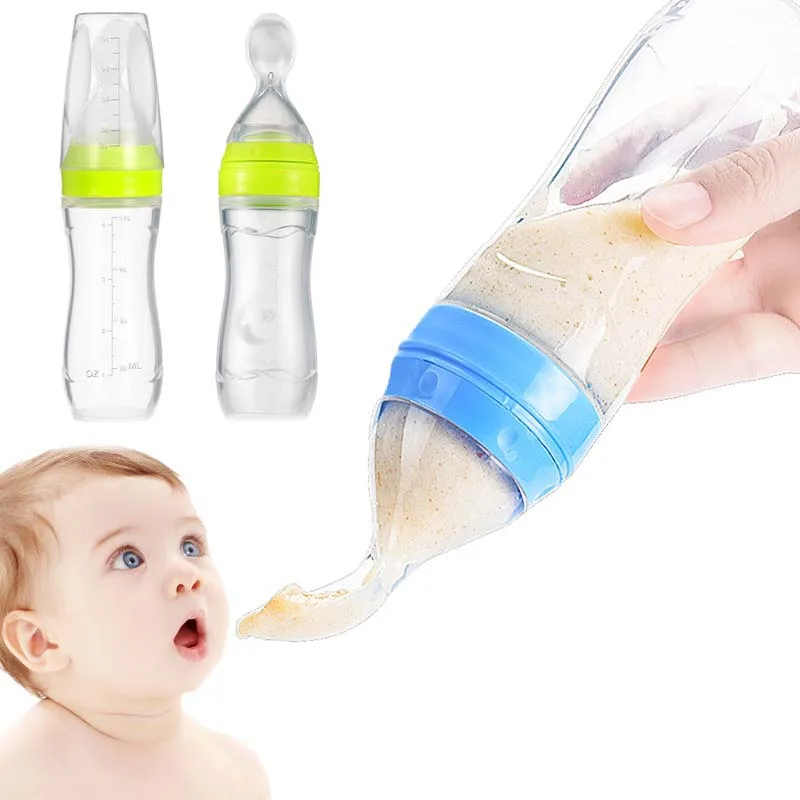
What’s the best way to clean a baby feeder?
Try using a bottle brush or just running water to clean out the mesh. It should be fairly easy to clean if you avoid letting it sit too long with food in it!
Are baby feeders good for babies?
The one downside could be that if you rely on them too much, the child learns the texture of the feeder, rather than of the food. This can make it harder for a child to learn to move actual food around in their mouths and harder for them to accept a range of textures in the future when you don’t want to be using the mesh feeder as much.
Because of that, I recommend using this product at limited times such as when on the go at a restaurant or to help sooth a teething infant, baby, or toddler.
This is not recommended as a way to feed your child at every meal.
If you are worried about choking, review this information on toddler choking and trust that if you serve foods that are easy to squish between your fingers, baby is sitting down at meals, and you are with them, they will learn to eat like so many other kids who have gone before them!
You May Also Like
- Best Baby Puffs
- Favorite Sippy Cups
- Best Snack Containers
- Best Lunch Boxes
- Favorite Suction Bowls
- Top High Chairs
I’d love to hear your thoughts on baby feeders in general or on these specific products, so please comment below to share!
This post was first published May 2019.
Dear parents, the competition "Bird feeders" is held in kindergarten
- Welcome!!!
- Education
- Annual plan
- Annual calendar study schedule
- Curriculum
- Schedule NOD
- Organization of the life of a preschooler during the day cold and warm period of the year
- Public report
- Work programs for teachers
- Working with children with disabilities
- Organization of work in a preschool educational institution with dysfunctional families.
- Career guidance
- Ecology
- Distance learning
- Additional education
- Information about the educational organization nine0002
- Basic information
- Structure and governing bodies of an educational organization
- Documents
- Education
- Manual.
 Pedagogical (scientific and pedagogical) staff
Pedagogical (scientific and pedagogical) staff - Logistics and equipment of the educational process
- Paid educational services
- Financial and economic activities
- Vacancies for admission (transfer) of students
- Available environment
- International cooperation
- Catering in an educational organization
- Daily hot meal menu
- Information about the availability of a dietary menu in an educational organization
- Lists of legal entities and individual entrepreneurs providing catering services in a general education organization
- Lists of legal entities and individual entrepreneurs supplying (selling) food products and food raw materials to a general educational organization
- Regional innovation platform 2020
- Innovation site
- Independent assessment of the quality of the conditions for the implementation of educational activities
- Approbation of the external assessment of preschool educational institution
- VSOKO
- Regional system for assessing the quality of education
- HOT LINE
- The prosecutor's office of the Malmyzhsky district analyzed the situation in ensuring the safety of people, including minors, at water bodies, protecting their life and health.
 nine0004
nine0004
- Labor protection
- Anti-terrorism security
- Civil Defense and Emergencies
- Protection of personal data
- Child traffic injury prevention nine0003 Safety for PRESCHOOL CHILDREN!!!
- Beautiful school - 2020
- "Green Light" 2021
- GTO norms
- Tasks and principles of the TRP
- Legal and regulatory support
- Academy - playground
Visually impaired version
mkdoe kindergarten №1 "Firefly"
612920 Kirov region, Malmyzh, Lesnaya st.
yandex-verification e6b72909e99b4b18
Main → News
November 19, 2019
Regulation
about the competition " Bird Feeders".
1. General provisions
Competition "Bird feeders" is held in MKDOU kindergarten No. 1 "Svetlyachok" in Malmyzh, Kirov region (hereinafter referred to as the competition)
2. Goals and objectives of the competition
2.1 Purpose: involvement of parents (legal representatives) in the educational process of the kindergarten
2.2 Tasks:
- to enable parents to show imagination and ingenuity in the design of the feeder,
- to develop joint creativity of children and parents,
- to form an ecological culture of preschoolers in a creative union of educators, children and their parents.
3. Participants of the competition:
Families of pupils can take part in the competition.
Production of collective works is possible.
4. Deadlines:
The competition is held from November 18 to December 2, 2019.
5. Procedure and conditions:
5.1. The competition is held in the following nominations:
-
original feeder;
-
functional feeder;
-
ecological feeder;
-
feeder made of unusual materials;
-
parental award
5.2. The size of the feeder, its type, shape and materials used are not limited by the conditions of the competition.
5.3. The work technique is not limited.
6. Competition evaluation criteria:
- strength,
- aesthetics,
- originality of ideas,
- functionality (practical use),
- compliance with safety requirements.
7. Jury of the competition
Senior teacher Trukhina G.B., music director Faskhutdinova E.N., teacher-speech therapist Dovbak E.M.
8. Rewarding:
The winners of the competition are awarded with diplomas.
The results of the competition will be presented on the website of MKDOU Kindergarten No. 1 "Firefly" in Malmyzh, Kirov Region.
| DIY bird feeder!
|
It's time to think about our smaller brothers - birds.
In winter, birds especially need feeders, during periods of severe frost and snowfall, when it is much more difficult to find food than in summer.
In winter, as you know, birds do not die from cold, from hunger. Out of ten titmouse, for example, only one survives frosts. On average, out of ten wintering birds, only three will meet spring. Showing concern for others is one of the hallmarks of a successful person. Feeding wintering birds will teach children how to take care of those who need help, help bring together different generations in the family and bring you a lot of joy. Your feeder will help save the lives of many birds! The more feeders there are, the more birds will live until spring. And this means that the plants on the territory of the kindergarten will have reliable protection against insects, our site will become even more attractive, bird trills will be more diverse and beautiful! Let's help the birds together! nine0197
On average, out of ten wintering birds, only three will meet spring. Showing concern for others is one of the hallmarks of a successful person. Feeding wintering birds will teach children how to take care of those who need help, help bring together different generations in the family and bring you a lot of joy. Your feeder will help save the lives of many birds! The more feeders there are, the more birds will live until spring. And this means that the plants on the territory of the kindergarten will have reliable protection against insects, our site will become even more attractive, bird trills will be more diverse and beautiful! Let's help the birds together! nine0197
How to build a feeder?
The process of creating a solid wooden bird feeder is quite laborious. If you know how to work with wood, then your feeder can become a unique product, decorated with drawings, carvings or burnt patterns.
You can build a simple feeder from any material at hand: from plastic bottles or cardboard bags for juices or milk, cutting holes in them. Nowadays, many liquid products are sold in plastic containers, and any of them can be used for crafts, and even some unusual ones. Imagine and be creative - this way you can turn the bird feeder into a real work of art that will decorate our site or window. nine0197
Nowadays, many liquid products are sold in plastic containers, and any of them can be used for crafts, and even some unusual ones. Imagine and be creative - this way you can turn the bird feeder into a real work of art that will decorate our site or window. nine0197
When creating feeders of any design, follow the main rules:
1. The feeder must have a roof, otherwise the feed will be covered with snow or rain, and it will become unsuitable for birds.
2. The design must allow birds to freely enter and leave the feeder.
The active bird feeder is a joy to watch birds, a research ground, a great object for photography or drawing.
During walks, you can observe the birds visiting the feeders, their names, tell the children why the birds are called that, what kind of food they like. Conduct conversations about the benefits of birds, about the rules of careful handling and attitude towards them, captivate children with the work of helping birds in winter, bring a variety of food (seeds, grains, cereals, lard) from home and do not forget to pour it into the feeders every day.
It is also possible to carry out research work to study the abundance, species diversity and characteristics of birds. It is important to create an emotional contact of the child with nature: let him observe on his own, find something unusual, sit quietly and listen to the birds singing, just look at them. nine0197
Birds in winter | How to help birds in winter
02/11/2015
Good deed or how to help birds in winter
In this article, in brief, we will try to answer the questions: what birds winter in central Russia; the meaning, diet, features, timing and norms of feeding birds in winter; types of bird feeders; how to properly place the feeder. What is it for? It is necessary in order, first of all, not only not to harm the birds, but also to facilitate their existence in difficult winter times. nine0197
Birds are one of nature's natural self-regulators.
Some birds destroy insects, thereby saving trees and shrubs from harmful insects. Others feed on the fruits of trees and shrubs, spreading them around, increasing the forest zone. Still others are mostly birds of prey, they are called feathered orderlies, live in forests, feed on mice and small birds, mostly sick or weakened.
Others feed on the fruits of trees and shrubs, spreading them around, increasing the forest zone. Still others are mostly birds of prey, they are called feathered orderlies, live in forests, feed on mice and small birds, mostly sick or weakened.
More than 300 species of birds are found in the Moscow region, some constantly nest here, others can be seen in the warm season, others, on the contrary, only in winter, others migrate in transit and can be seen when they stop to replenish their strength between flights. nine0197
All this variety of birds has its own habitat - some settle everywhere, others prefer a certain habitat: reservoirs, bolts, forests, meadows, farmland places and cities. This is largely due to the "diet" of birds.
In central Russia, in addition to a large and diverse family of passerines, you can meet representatives of various waterfowl, predators.
The seasonal behavior of birds is greatly influenced by the diet of birds. nine0197
nine0197
Those birds whose main diet has a pronounced seasonal nature (insects, frogs), almost all migrate to where they can find food - to "warm lands". These include birds whose habitat disappears with the onset of cold weather. Starlings, wagtails, larks, black-headed gulls, warblers, swans, etc. are prominent representatives of this group.
Birds with a plant-based diet are most often sedentary (for example: fieldfare thrush, spotted woodpecker, black-headed goldfinch), although some may migrate to places where they can find their favorite food (for example: long-tailed tit ). nine0197
Birds of prey can also be divided into migratory and sedentary. The reason for their migration is mainly the presence or absence of food supply. Their migration is mainly related to the search for food.
There is another category of birds, the so-called "city dwellers", which lead a settled way of life and are a constant companion of man. These primarily include the gray crow, pigeons and sparrows.
These primarily include the gray crow, pigeons and sparrows.
Importance of bird nutrition in winter
Many have thought about how hard it is for birds to survive in winter?
It has long been known that many birds die in winter not because of the cold, but because of the lack of the usual good nutrition. Therefore, in order to preserve the bird population, many of them need additional feeding.
Winter is a difficult time of the year for all birds, but not because of the cold and frost, but because with the onset of cold weather, their food supply disappears or is significantly reduced. In order not to freeze, they need a lot of energy for warming, and for this you need to constantly replenish it - eat, and more often and more than in the summer. “Frost is not terrible for a well-fed one” - this can be said about birds. The winter day is short and the birds have little time to search for food. Therefore, birds tend to go where it is easier to find food and where you can hide from the winter cold - to cities, towns, villages closer to people. nine0197
Therefore, birds tend to go where it is easier to find food and where you can hide from the winter cold - to cities, towns, villages closer to people. nine0197
Feeding birds in winter taking care of nature
Bird feeders are not just about taking care of our little brothers, but also taking care of yourself.
Imagine if all the birds destroying pests disappeared at once - the consequences would be simply catastrophic, which would threaten humanity itself.
First of all, this applies to small representatives of the feathered family remaining for the winter, in the diet of which there is plant food, as well as various insect pests. In winter, many of these birds move closer to humans, to cities, towns and villages, because here it is easier for them to feed and survive. nine0390 Properly organized top dressing will help more birds survive in winter, their gratitude in summer is the destruction of pests in forests, parks, squares and household plots.
Wintering birds or which birds stay wintering
To begin with, let's look at some birds whose food is based on insects, they are most vulnerable in winter. Usually these are representatives of the sparrow order and more than others need human help. These birds can be attributed both to urban birds and to the inhabitants of parks, alleys, gardens and other urban green areas of large and small cities. nine0197
| Great tit | | Long-tailed Tit |
| In summer it lives in forests of various types, outside settlements, in large parks, rarely near human habitations. In winter - lives closer to people. | | Lives in different types of deciduous forests. In Moscow and the Moscow region, it can be found in birch and alder forests of forest park areas. Some birds lead a sedentary lifestyle, stay for the winter and live near their nesting sites. In winter it eats small seeds. Often they can be seen in flocks of great tits. |
| | nine0390 | |
| Great spotted woodpecker | | Lesser spotted woodpecker |
| The most common type of woodpecker in the Moscow region. | nine0390 | A species common for the central European zone, found on forest edges, in river valleys, in parks. It does not fly away for the winter, a frequent visitor to bird feeders in parks. |
| | | |
| Muscovy or Little Tit | | Blue Tit |
| In Moscow and the Moscow region - a common species, found only in large forest parks, where coniferous trees predominate. Food is prepared in the summer. | | nine0388 Common inhabitant of Moscow region and Moscow deciduous forests and parks; in the city often settles in the yards. It nests in hollows of trees, in holes in concrete lampposts, in chimneys of fences. For the winter, some birds remain in nesting places, some migrate. Titmouse flock to bird feeders, especially often in years of poor seed harvest. Here they feed on peanuts, sunflower seeds, unsalted lard and leftover food. |
| | | |
| Bullfinch | | Field and house sparrows |
| Our winter guest from the Arctic, migrates to central Russia with the onset of the first cold weather. | | The most widespread birds in Russia. The field sparrow is a common inhabitant of the countryside and Moscow parks, the brownie is a resident of cities and large towns. Lives everywhere in Moscow. |
| | | |
| Fieldfare thrush nine0390 | | Black-headed goldfinch |
| A typical view for the Moscow region. Lives along the edges of the forest or in copses, next to fields and meadows. | | A common bird for the Moscow region. It occurs along the edges of forests, in copses; often settles on the outskirts of villages, in gardens and parks. In winter, it keeps to wastelands, where weeds stick out from under the snow, but sometimes it is not averse to feasting on the contents of bird feeders. |
| | | nine0390 |
Let's talk about other wintering birds
Pigeons and hooded crows are typical city dwellers.
Gray Ravens
These are one of the most intelligent birds, the main habitat of large and small cities. They are omnivores. Choose places where they are least disturbed. Mostly kept in packs, in which a hierarchy can be traced. Very often they behave aggressively, especially during the period of rearing chicks. nine0390 It does not need feeding, because it will always find where and what to profit from. They can also be called the city feathered orderly.
City pigeons
Man has had a very great influence on the distribution and population of these birds, these are the most numerous city birds that originated from the wild rock dove. However, before these birds learned to live next to humans, they went through a long history of domestication.
City pigeons want to eat all the time, but they don't make feeders for them. In addition, these are collective birds, and if at first one dove appeared, then in a couple of minutes a whole flock of them can fly together. City pigeons remember very well the places where they are fed. The average life expectancy of urban pigeons is 2-3 years, while wild pigeons live 12-15 years. This is primarily due to nutrition and population density. Pigeons, like other birds, are contraindicated in “crumbs from the table” and any other food containing various fats. It is best to feed pigeons with various cereals, grains and legumes, seeds that are not fried or salted, as well as raw chopped vegetables and fruits. nine0390 City pigeons are probably the only bird that is highly dependent on humans. Therefore, to feed or not, everyone decides for himself.
City pigeons remember very well the places where they are fed. The average life expectancy of urban pigeons is 2-3 years, while wild pigeons live 12-15 years. This is primarily due to nutrition and population density. Pigeons, like other birds, are contraindicated in “crumbs from the table” and any other food containing various fats. It is best to feed pigeons with various cereals, grains and legumes, seeds that are not fried or salted, as well as raw chopped vegetables and fruits. nine0390 City pigeons are probably the only bird that is highly dependent on humans. Therefore, to feed or not, everyone decides for himself.
Wintering water birds include:
Mallards
They dominated the ice-free city ponds.
The basis of their diet is vegetation (seeds, leaves and stems of grasses, sedge, duckweed, hornwort, pondweed, mustard, cereals, rice-like leersia, strepoloist, barnyard), insects (grasshoppers), mollusks, fish caviar, earthworms, frogs, tadpoles, snails and slugs (especially for young birds). nine0390 For feeding, it prefers shallow water (no deeper than 35-40 cm), so that it can reach the bottom with its beak.
nine0390 For feeding, it prefers shallow water (no deeper than 35-40 cm), so that it can reach the bottom with its beak.
Gogoli
The second largest, but still a common inhabitant of city ponds and rivers.
Feeds mainly on aquatic invertebrates. In summer, the basis of the diet is insects and their larvae - caddisflies, bloodworms, water beetles, dragonflies, bedbugs, midges, etc. In winter, it eats more mollusks and crustaceans. It also feeds on earthworms, amphibians and small fish; in autumn, small amounts of seeds, roots and vegetative parts of aquatic plants. nine0197
City ducks are very often killed due to malnutrition.
It is not recommended to feed ducks, oddly enough - bread, it does not contain elements useful for the bird and creates a feeling of satiety, as a result, the duck stops looking for other food. It should be noted that soaked bread pollutes the water and leads to the death of some inhabitants of the aquatic environment. It is advisable to avoid peanuts, milk, and any foods that contain saturated fats.
It is advisable to avoid peanuts, milk, and any foods that contain saturated fats.
If you really want to help waterfowl, the best food to use is:
- grated cheese;
- soft fruits and vegetables (for example, strawberries, or soft apples), exotics are also allowed, for example, bananas;
- oatmeal, in the form of cereals or breakfast cereals.
It is useful to give these products to ducks, especially in spring, when the chicks are hatching. Of the neutral products that at least will not harm the birds, but will not bring any benefit - potatoes, cabbage, worms, small fish. nine0197
Some features of bird feeding in winter
Our desire to help birds can be described as "Good deed". Many of us arrange feeding grounds and feeders for birds. But in order for our good intentions not to turn into disaster for the birds, it is necessary to follow some rules in feeding:
1. Constantly, as the feed is used up, but not more than once a day, replenish the feeders. Moreover, it is desirable to do this in the morning, approximately at the same time. nine0197
Constantly, as the feed is used up, but not more than once a day, replenish the feeders. Moreover, it is desirable to do this in the morning, approximately at the same time. nine0197
2. It should be borne in mind that fried or salted seeds, lard, meat are contraindicated for birds - this is poison for them.
3. Do not feed the birds with crumbs of black or rye bread, this can lead to their death.
4. Never give rancid grain, moldy, musty food to birds, as they produce toxins that are deadly to birds.
5. Millet should not be given to birds, as it does not have a shell, which leads to the oxidation of fats on its surface, the appearance of toxic substances, pathogens. nine0197
6. You can't just overfeed the birds, so it is recommended to renew the contents of the feeder no more than once a day.
Best for feeding birds:
1. Millet, oats, wheat - the most versatile food that attracts birds that feed on various seeds and cereals.
2. Sunflower seeds - universal food for wintering birds. A large amount of vegetable fats contained in them are an important source of replenishment of energy in conditions of winter cold. nine0197
3. Lard, meat - can also be used for winter feeding of birds. They are very fond of some types of birds. But it is worth remembering that this food should be unsalted and not subjected to heat treatment. This top dressing should be placed in such a way that it would not go to crows, magpies, jackdaws, cats and dogs. Usually it is hung on ropes near the feeders or on special perches in bird feeders.
4. Dried rowan and hawthorn - you need to prepare and dry in advance, from autumn. They attract the most beautiful winter feathered representatives - bullfinches and waxwings. nine0197
5. Maple and ash seeds - their seeds are also called lionfish. They mostly fly from trees in autumn and become inaccessible to birds. Lionfish are harvested in autumn and hung on feeders.
6. Cones, acorns, nuts - are the main diet of some birds. Having prepared them in the fall, you can attract woodpeckers and jays to your bird feeder.
Many specialized stores sell ready-made bird food, which makes it much easier for you to feed birds in the winter. nine0390
Terms and norms of bird feeding
In central Russia, the duration of the feeding season is 180 days (October-March).
The total length of the feeding season depends on climatic conditions, natural forage yield, and other factors.
It makes no sense to start feeding birds if the weather is calm and warm in October, and there is still enough natural food in nature. Top dressing in the month of October should be started under adverse weather conditions - early cold, rainy weather, early snowfall, as well as crop failure of natural fodder. nine0197
The most difficult period - absolute starvation comes only with the freezing of the soil or the fall of deep snow cover.
Therefore, the feed rate should be distributed over periods:
The first period - bait, is approximately 30-45 days (from October 15 to November 30). This is the time to accustom the birds to the feeders. Feed is laid out in an amount of no more than 15-20% of the norm (as long as the birds are reluctant to eat them).
nine0196 The second period is the main, the most responsible and lasts about 90 days (approximately from December 1 to March 1). At this time, the birds are especially in need of feeding, so they need to be given a full feed rate. However, it is not recommended to overfeed birds, especially with sunflower seeds - birds stop consuming a variety of natural foods (believing that they are well fed here), and this reduces their natural resistance to infections, and they become overly dependent on feeding and as a result - when it is stopped, although For 2 days the birds often die. nine0197 The third period - the final one, lasts about 10-25 days (approximately from March 1 to March 25). During this period, 60-80% of the total norm should be laid out. But this period very often depends on the vagaries of nature, but in any case, top dressing should be continued until the first thawed patches appear on the ground.
During this period, 60-80% of the total norm should be laid out. But this period very often depends on the vagaries of nature, but in any case, top dressing should be continued until the first thawed patches appear on the ground.
In places where it is necessary to attract birds, it is possible to place not individual feeders, but entire feeding areas.
nine0196 Stationary feeding areas - plots approximately 5x5 or 7x7 m in size, feeders should be evenly spaced over this area. Feeding grounds for birds are usually arranged in places where it is convenient to serve them, and the birds will be the least disturbed. Usually these are alley parks, etc.Approximate bird feed rates
Cereal mixtures (millet, oats or oatmeal, hemp or sunflower, oats, crushed wheat): nine0390 For one feeder per day - 200 g
For the whole season - 11.2 kg
Weed Seed Mix:
For one feeder per day - 200 g
For the whole season - 11. 2 kg
2 kg
Meat:
For one feeder per day - 50 g
For the whole season - 2.8 kg
At the same time, top dressing should be organized in such a way as to attract no more than five birds to one feeder, because. the accumulation of a large number of birds in one place increases the risk of infection with various diseases. nine0197
Types of bird feeders
This is where the fantasy can unfold!
Various materials can be used to make feeders - wood, plastic, cardboard and various combinations thereof.
The simplest options are feeders made from plastic bottles, milk or juice bags.
It should be cautioned that those feeders where continuous (constant) addition of feed in excess of the norm are provided are very undesirable. As mentioned above, birds need to be fed, not overfed. An overfed bird moves less, which is why its metabolism slows down in its body, resistance to diseases decreases and they die. nine0197
nine0197
When making bird feeders, there are a few simple guidelines to follow:
1. Feeders must be sized for the birds you choose to feed. Everyone knows that where crows and doves appear, there is no place for other birds.
2. The feeder must have a roof (canopy) to protect the feed from precipitation (rain, snow). Wet food spoils quickly, and snow that has fallen makes access to food much more difficult. nine0197
3. It is advisable to pour the bird food into some small containers, which allows more economical use of food, because. it is less scattered and lost, and also not to overfeed the birds.
4. If the feeder is closed, then the holes for the birds should be such that the birds could freely get inside, but you should not get carried away with large sizes, because. food can spill out through them, especially in strong winds.
nine0196 5. Consider in advance how to attach the feeder. On a suspension bracket, to a wall, a post or a tree.
On a suspension bracket, to a wall, a post or a tree. Making a feeder, along with feeding the birds, is an educational process and often labor intensive. In addition, not every parent can entrust "his child" with a hacksaw, drill, jigsaw and hammer, and making a feeder himself in the presence of a child is not entirely correct. Moreover, the manufacture of bird feeders can be made part of the labor education of boys, acquiring the skills of designing, assembling and working with a simple tool. nine0197
It often happens that there is a desire to do a good deed, but for some reason beyond your control, there is no such possibility, then ready-made kits will help you out.
Ready-made sets of bird feeders made of wood are sold unassembled, equipped with everything you need, so your child, under the supervision of a parent, will only need to spend no more than half an hour to assemble.
Tenth Kingdom, a Russian manufacturer of educational games, offers ready-made bird feeders Feeder dimensions: Feeder dimensions:
Art.  No. 01639
No. 01639 Art. No. 01640 Art.
- height - 190 mm;
- length - 220 mm; nine0390 - width - 150 mm
- height - 200 mm;
- length - 135 mm;
- width - 200 mm
nine0196 Feeder dimensions:
- height - 235 mm;
- length - 140 mm;
- width - 240 mm
What are the advantages of these ready-made kits:
1. The material of the feeders is sanded birch board. nine0390 2. Painting was done with harmless water-based paints.
The material of the feeders is sanded birch board. nine0390 2. Painting was done with harmless water-based paints.
3. Products are certified.
4. Safe for children because there are no sharp and small parts.
All these bird feeders are included in the Good Deed program.
You can buy your favorite bird feeder in the Tenth Kingdom manufacturer's online store.
Place bird feeder
Placement of feeders should be approached no less seriously than production.
The feeder should be placed in a quiet, calm place, always on the south side of a tree, edge (if in a forest clearing) or building.
So, where can you place bird feeders.
1. The first thing that comes to mind for many people is to hang a feeder outside the window or on the balcony. First of all, because of the convenience of the person himself, but at the same time there are several nuances: nine0390
- The main and essential is the garbage, both on your window or balcony, and from the neighbors downstairs.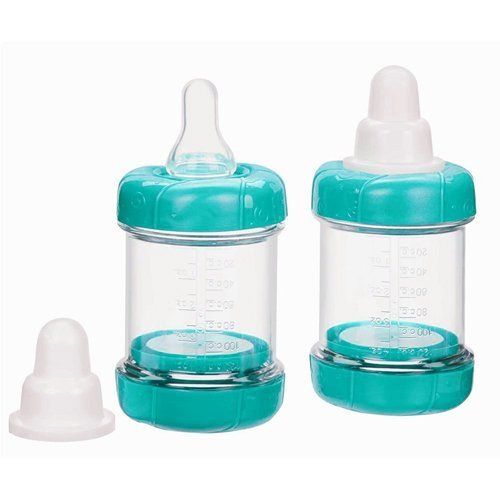
- It is harmful for the birds themselves, because. they do not always feel the barrier in the form of glass and can simply break.
- You should not even think about placing a feeder on the first floor window. In this case, birds can become easy prey for cats.
2. On a free-standing support, pole or tree trunk. For this, closed-type feeders are best suited to make it as difficult as possible for lovers to feast on birds. nine0390 3. On suspension. This is the safest way to place a bird feeder. Also an important feature of this placement is the possibility of birds flying up from any direction.
It should be noted that ornithologists are engaged in placing bird feeders and feeding birds in large forest park areas. They track the number of wintering birds, their species, weather conditions and, in accordance with this, select the composition and amount of food.
If the birds gather at the feeder in winter, it means that they need your help.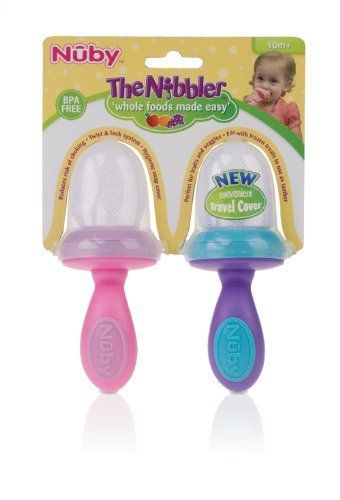 And by helping the birds, you are doing a good deed not only for wintering birds, but also for yourself. nine0197
And by helping the birds, you are doing a good deed not only for wintering birds, but also for yourself. nine0197
Questions and answers
This table contains frequently asked questions and answers to them:
| How to make a bird feeder | A bird feeder can be made from any available material. The simplest options are from a plastic 2 or 5 liter bottle, solid (cardboard) milk or juice bags. Feeders made of wood are very popular, they can be given any design and shape, colors. Very often you can see combined feeders made of wood and plastic elements. Today you can buy various bird feeders, the assembly will take no more than half an hour, which even a child can handle. nine0197 | |
| How to hang the feeder | First of all, you need to remember that the feeder would be inaccessible to predators, in a quiet, windless place and should be as illuminated as possible. | |
| What birds appear at the feeder in winter | Sparrows, tits, blackbirds, bullfinches, goldfinches, greenfinches and even woodpeckers. It depends on several factors: | |
| Feeding rates for birds | It is generally accepted that there are approximately 5 birds per feeder. The daily rate of feeding, depending on the "visitors" of the feeder, should not exceed grain mixtures - 200 gr, weed seed mixtures - 200 gr, meat or lard - 50 gr. | |
| nine0196 When to start feeding birds. When to stop feeding birds. | Feeding season for birds lasts approximately from October to March, but may vary depending on weather conditions. Top dressing should be started when it becomes more difficult for the birds to get their usual food - with the onset of the first frost, snowfall, constant rain. |

 In addition to seeds, they like raw unsalted lard or meat. Around the feeders behaves quite carefully. nine0197
In addition to seeds, they like raw unsalted lard or meat. Around the feeders behaves quite carefully. nine0197  Inhabits various forested areas. In winter, it feeds on pine and spruce seeds, and is a frequent visitor to bird feeders in parks.
Inhabits various forested areas. In winter, it feeds on pine and spruce seeds, and is a frequent visitor to bird feeders in parks.  Spruce and pine seeds predominate among the stocks, but there are also stocks of animal feed. A very rare visitor to the city feeders.
Spruce and pine seeds predominate among the stocks, but there are also stocks of animal feed. A very rare visitor to the city feeders.  They live in small flocks of 7-10 birds. The bullfinch feeds more often on seeds, buds and berries. nine0197
They live in small flocks of 7-10 birds. The bullfinch feeds more often on seeds, buds and berries. nine0197  In summer, the fieldfare feeds on insects, worms, mollusks, spiders, and in the fall it switches to a variety of berries, especially loves mountain ash. In winter, many birds roam the gardens, parks and yards in search of food.
In summer, the fieldfare feeds on insects, worms, mollusks, spiders, and in the fall it switches to a variety of berries, especially loves mountain ash. In winter, many birds roam the gardens, parks and yards in search of food.  The best option is to hang the feeder on a tree branch. You can place the feeder on the balcony, outside the window or fix it on the wall, pole. nine0197
The best option is to hang the feeder on a tree branch. You can place the feeder on the balcony, outside the window or fix it on the wall, pole. nine0197 
